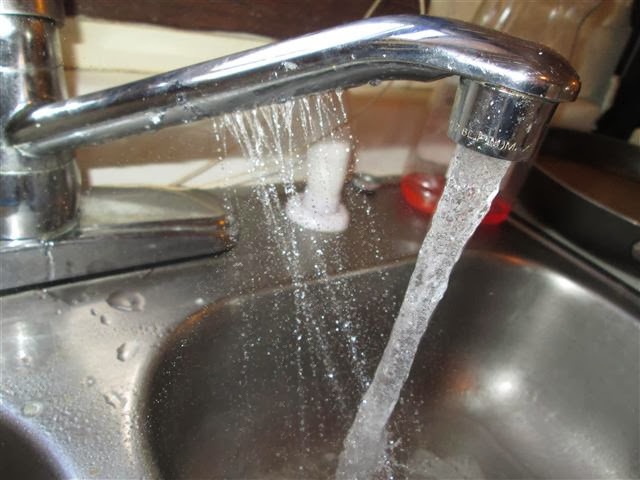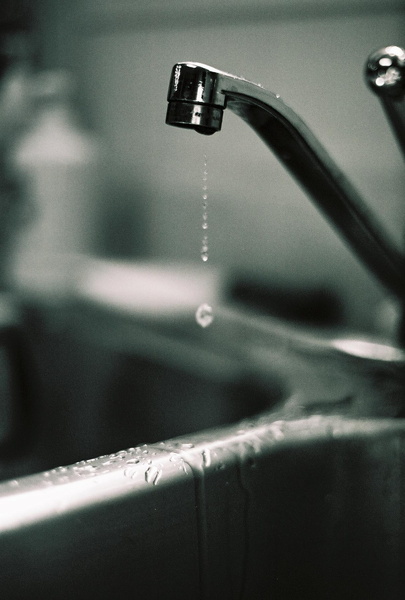Impacts of a Leaky Faucet
Impacts of a Leaky Faucet
Blog Article
They are making several great points on Potential Health Risks Associated With Leaky Faucets overall in this great article following next.

Intro
A leaky tap might feel like a minor annoyance, but its effects prolong much beyond the periodic drip. Understanding the results of a leaky tap is important for both homeowners and the atmosphere. In this article, we'll check out the numerous effects of this usual home issue and why resolving it promptly is necessary.
Causes of Leaky Faucets
Leaking taps can result from a range of factors, including damage, high water pressure, and rust. With time, the constant use of taps can bring about damaged seals and gaskets, causing leaks to create. Additionally, extreme water stress can place pressure on plumbing fixtures, causing leakages. Corrosion and rust can likewise deteriorate tap components, making them prone to leakage.
Water Wastage
One of one of the most substantial effects of a leaky faucet is water waste. Even a little drip can amount to gallons of drainage over time. This not only drives up water expenses however likewise contributes to water shortage and environmental deterioration. Attending to dripping taps without delay is crucial for conserving this precious resource and reducing its effect on the world.
Financial Effect
In addition to wasting water, leaky faucets can additionally have a substantial economic influence. Raised water costs are a straight repercussion of water waste, costing property owners hundreds of dollars annually. Moreover, the cost of fixing water damages triggered by leaks can be significant, specifically if left ignored for a prolonged period.
Environmental Influence
The ecological effect of leaky taps expands beyond water wastage. By conserving water, home owners can add to wider efforts to alleviate water scarcity and protect all-natural environments. Sustainable alternatives such as rain harvesting and water-efficient fixtures can further lower the environmental footprint of house water usage.
Technological Solutions
Innovations in innovation have caused the advancement of smart faucets and water-saving gadgets that help reduce water wastefulness. Smart taps use sensing units to spot motion and readjust water circulation as necessary, lowering waste without compromising benefit. Water-saving devices such as aerators and low-flow showerheads are additionally efficient in conserving water without jeopardizing performance.
Global Point of views
While leaking taps may feel like a localized concern, they add to broader worldwide obstacles such as water shortage and environment change. In areas currently facing water stress and anxiety, every drop counts, making leakage avoidance and repair work essential. By embracing water-saving techniques and investing in sustainable modern technologies, homeowners can play their component in addressing these pressing worldwide concerns.
Regulatory Procedures
Federal government regulations play an important duty in mitigating the effect of leaking taps and promoting water conservation. From constructing codes that call for water-efficient fixtures to water-saving rewards and discounts, policymakers have a series of tools at their disposal. By implementing and imposing these guidelines, federal governments can make certain that homeowners prioritize water conservation in their lives.
Neighborhood Effect
Attending to leaking taps needs collective efforts at the community level. By raising awareness about the significance of water conservation and providing resources for leak discovery and fixing, neighborhood authorities can encourage home owners to do something about it. Initiatives such as water-saving refund programs and leakage discovery campaigns can incentivize habits modification and promote responsible water use.
Situation Studies
Real-life examples of the influence of dripping taps underscore the significance of proactive upkeep and prompt repair work. From water damage to increasing water costs, the repercussions of disregarding leaks can be extreme. By sharing these study, property owners can better recognize the value of resolving leaking faucets without delay.
Educational Campaigns
Educational projects play an important role in elevating awareness concerning the impacts of leaky taps and promoting water preservation methods. Through workshops, workshops, and on the internet sources, house owners can learn just how to find and repair leakages themselves. By equipping people with understanding and tools, educational projects can foster a society of responsible water use within communities.
Wellness Concerns
Dripping faucets can produce conducive atmospheres for mold and mildew development, positioning wellness risks to owners. The existence of mold and mildew can intensify respiratory system issues and allergic reactions, particularly in susceptible people. Additionally, water damage arising from leaks can jeopardize the architectural integrity of buildings and cause costly repair services.
Do it yourself vs. Expert Repair
When faced with a leaking tap, homeowners typically question whether to attempt repair work themselves or work with a specialist plumber. While DIY repair work can conserve cash, they might not constantly address the underlying problem successfully. Expert plumbers have the competence and devices to detect and deal with leakages correctly, ensuring long-term services and assurance for house owners.
Safety nets
Stopping dripping taps needs routine upkeep and positive procedures. Simple tasks such as changing damaged washing machines and seals can protect against leakages from creating. In addition, updating to top notch components and minimizing water pressure can help prolong the life-span of taps and lessen the danger of leaks.
Conclusion
In conclusion, the impacts of a dripping tap extend much past the periodic drip. From water waste and enhanced water expenses to wellness problems and environmental influence, the effects of ignoring leaks can be substantial. By addressing leaking taps promptly and adopting water-saving methods, house owners can minimize these effects and add to an extra lasting future.
Why You Shouldn’t Ignore a Leaky Faucet in Your Home
What Causes a Leaky Faucet?
Various factors can cause a leak, from loose and worn-out parts to corrosion. Your faucet has four essential components from which most plumbing issues will stem: the O-ring, the valve seat, the washer and the gasket.
What Is an O-Ring?
The O-ring is a stem screw that fastens parts of the faucet in place, preventing water from leaking out of the spout. Depending on your faucet type, the stem might have multiple O-rings. Water will drip from the faucet’s handles and base if this part breaks or deteriorates.
What Is a Valve Seat?
The valve seat controls the flow and temperature of the water. Found at the base of the handle, it works as a seal for the faucet’s stem. The valve seat ensures the water is allowed to flow or is blocked as the handles dictate. You’ll know it’s malfunctioning when water leaks from your faucet’s sides.
What Is a Gasket?
The gasket is found between the water inlet and the valve stem. It creates a seal between the faucet and the sink, holding its joints by aerators attached to the stem’s head. Water will trickle out from the base if the gasket isn’t working.
What Is a Washer?
The washer secures the handles and prevents leakage, serving a similar purpose to the O-ring. While the O-ring is ordinarily round and made from an elastic material, such as rubber, the washer is square-shaped and composed of brass, copper and other hard metals. If it malfunctions, corrodes or has been improperly installed, water will leak out of the handles, causing that incessant faucet drip.
Why Is a Leaky Faucet Dangerous?
A leaky faucet left alone for too long can have significant consequences.
Pest Infestations
Since bugs and rodents gravitate towards the scent of water, a leaky faucet will draw pests to your sink. Both are looking for leaks accessible through crawl spaces, which a faucet provides. If you leave water dripping for too long, you run the risk of an infestation.
Rust
If one of the faucet parts has started to corrode, the resulting rust can spread to your pipes and valves with startling speed. The rust might even lead to cracks or other impairments, resulting in more severe plumbing issues.
Your sink could also sustain damage from a leaky faucet. The water in your tap possesses sparse elements of calcium and iron that can stain your sink with repeated and prolonged exposure. Once those elements in the water have been open to the air for some time, your sink will start to rust, creating marks that can be difficult to remove.
https://www.tomsmechanical.com/blog/why-you-shouldnt-ignore-a-leaky-faucet-in-your-home

Do you enjoy reading up on The Environmental Impact of Leaky Faucets? Leave a remark directly below. We'd be glad to listen to your opinion about this blog entry. Hoping to see you back again later on. Do you know anybody else who is fascinated about the topic? Do not hesitate to promote it. Thanks a lot for your time spent reading it.
Report this page